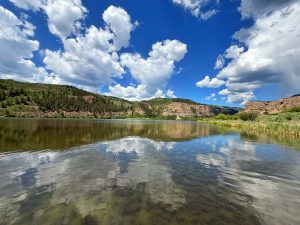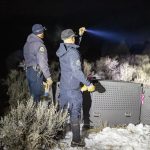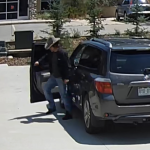Interior Department changes priorities, requirements for Land and Water Conservation Fund
Concerns arise around how a secretarial order will politicize the 60-year-old conservation and land access program
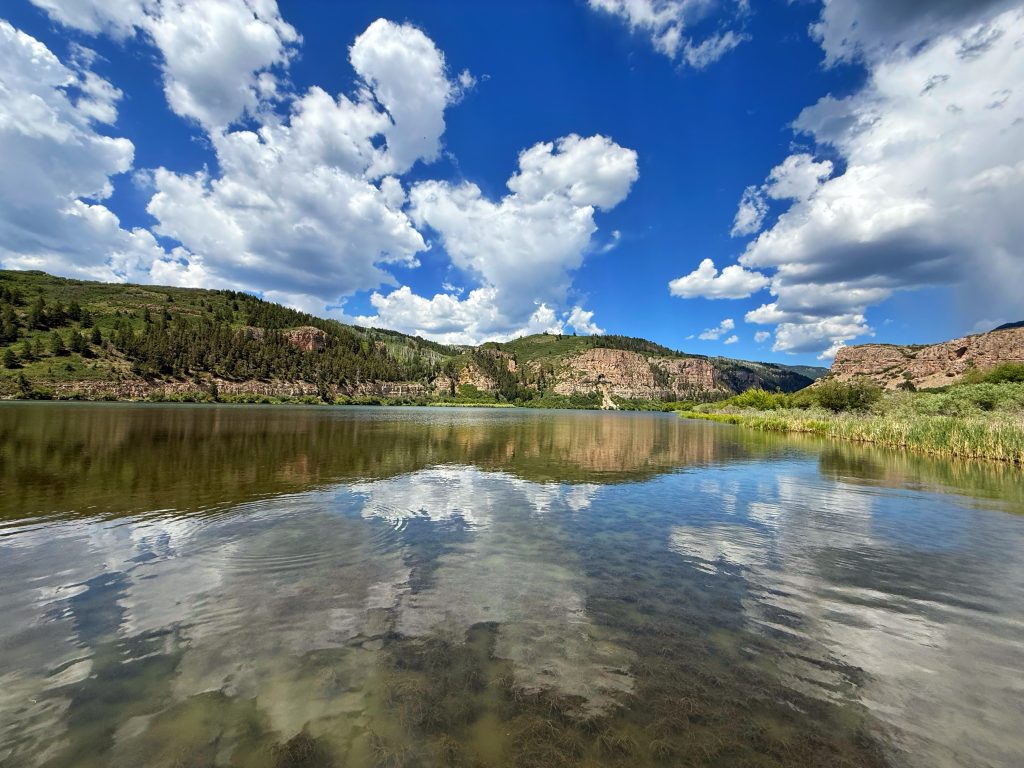
Ali Longwell/Vail Daily archive
The U.S. Department of the Interior is shifting priorities within a federal conservation and land access program in a way that some conservation groups say is antithetical to its purpose of preserving public lands.
Interior Secretary Doug Burgrum issued a secretarial order on Sept. 4 that adds guardrails for how the Land and Water Conservation Fund is implemented within the department. Specifically, the order places a priority on land acquisitions by the U.S. Fish and Wildlife Service and National Park Service over those by the Bureau of Land Management.
Opposing groups are concerned that it will essentially preclude Bureau of Land Management acquisitions.
“Basically, all of the BLM projects we’ve seen in the last several years would not qualify,” said Amy Lindholm is the director of federal affairs for the LWCF Coalition, an advocacy organization that connects group stakeholders, including nonprofits, ranchers, local governments and land trusts.
It also requires projects to receive approval from the governors and local municipalities, grants states the ability to use the funds to purchase “surplus” federal property and limits how nonprofits can participate in the program.
The department said in a news release that the actions are meant to align with President Donald Trump’s “commitment to expanding outdoor recreation, reducing red tape and ensuring that America’s public lands serve the American people.”
Some environmental, hunting and recreation groups have expressed concerns over the impact the order will have, claiming that it will unnecessarily narrow eligibility, politicize the process and open up the door for the disposal of public lands.
“For generations, LWCF has been the cornerstone of conservation and access, delivering projects that protect migration corridors, open up hunting and fishing opportunities, and strengthen local economies,” said Chris Borgatti, representing the Backcountry Hunters & Anglers, a nationwide advocacy group for sportsmen and women, in a statement. “This order undermines that legacy by substituting politics for sound policy.”
What is the Land and Water Conservation Fund?
Congress created the Land and Water Conservation Fund in 1964, directing proceeds from offshore oil and gas royalties to support the acquisition of land to preserve conservation and recreation access.
Lindholm referred to the fund as the “most important federal conservation program” and one that has carried “enduring, strong bipartisan support for over half a century.”
“There’s lots of land within the boundaries of National Parks, Wildlife Refuges, National Forests and (Bureau of Land Management) lands that are privately held,” Lindholm said.
For the last 60 years, the Land and Water Conservation Fund has been helping to acquire these parcels piece by piece, she added.
The fund also distributes grants to states and local governments to create and improve park and recreational sites.
“Having this patchwork of ownership and protection within public lands and particularly within wilderness really poses a threat to the wilderness area as a whole,” said Margosia Jadkowski, speaking on behalf of the Wilderness Land Trust, an accredited land trust that helps acquire private properties from willing sellers and transfer them to public ownership.
“When we can consolidate protection across the landscape, not only does it remove those little pockets of threats of development, but it strengthens what that protection means on the ground,” Jadkowski said. “It means more connected wildlife habitat. It means that watersheds are healthier. It means that public access is stronger and is protected.”
Most recently, the Wilderness Land Trust has partnered with Pitkin County to support the transfer of the 650-acre Snowmass Falls Ranch to the U.S. Forest Service, which manages the Maroon Bells-Snowmass Wilderness surrounding the property.
The partners are actively pursuing $34 million from the Land and Water Conservation Fund to support the transfer, an allocation that will make it one of Colorado’s largest acquisitions to do. Snowmass Falls Ranch was named as a priority project for the Conservation Fund and looks likely to receive allocations in Trump’s Fiscal 2026 budget, according to Jadkowski.
Burgum’s secretarial order only applies to the Interior Department, so projects or proposals like Snowmass Falls that land within the U.S. Forest Service will not be impacted. The Forest Service falls under the purview of the U.S. Department of Agriculture.
As Forest Service projects seem set to receive their allocations in the Fiscal 2026 budget, the Department of the Interior has yet to do the same.
Since its inception, the Conservation Fund has distributed $357 million to projects in Colorado. One of the largest allocations in the state went to aid in the transfer of the 488-acre Sweetwater Lake property from private ownership to the White River National Forest in 2020.
These projects start from the bottom up with local communities and land trusts identifying where willing sellers and potential parcels are located, Lindholm said.
The local federal land agency units look at the proposals and send their priorities up the chain of command. Potential grants and acquisitions are then ranked at the federal level, with departments creating priority lists that then receive allocations through the president’s annual budget proposal.
Since its inception, the program has seen around $22 billion diverted from the fund, according to the LWCF Coalition. However, in 2020, under the first Trump administration, the bipartisan Great American Outdoors Act ended the diversion and permanently authorized the Conservation Fund to receive $900 million annually.
Jadowski said this act is referred to by many as “President Trump’s crowning conservation achievement.”
What will the latest secretarial order impact?
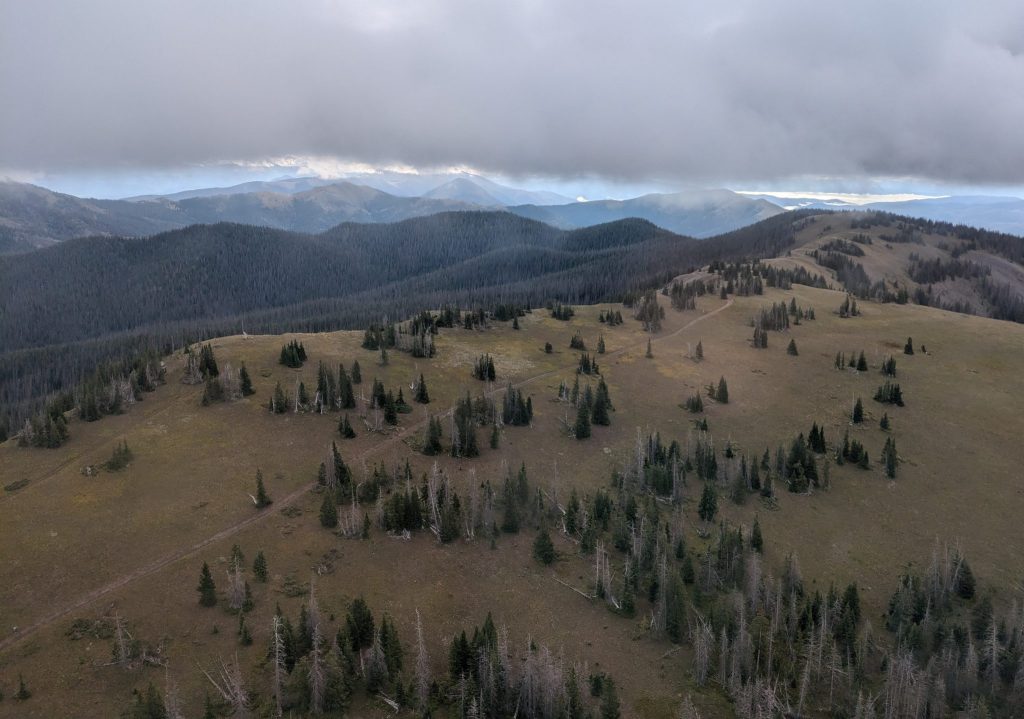
The greatest concern Lindholm has with the new Interior Department order is that “it’s just a laundry list of restrictions on projects that is going to make the process so much harder, and it’s going to actually prohibit a lot of really good projects.”
The order prioritizes acquisitions by the Fish and Wildlife Service and National Park Service — except in cases where it establishes access to “isolated” federal property managed by other agencies.
In northwest Colorado, there is one project currently building local support for Conservation Fund dollars to help with a significant recreation acquisition.
The Continental Divide Trail stretches 3,100 miles from New Mexico to Montana. The trail is only 95% complete, leaving 180 miles where travelers have to exit the trail and divert onto busy roadways.
Fourteen of these miles are located in Colorado outside of Steamboat Springs on Muddy Pass, a gap that will require “a significant investment” to close, according to L Fisher, the director of trail programs for the Continental Divide Trail Coalition. The group is working with the Bureau of Land Management on this particular acquisition.
“(The Land and Water Conservation Fund) is often the best and oftentimes the only tool we have to complete the project,” Fisher said, adding that closing the Muddy Pass gap will hinge on being able to secure money from the Conservation Fund.
The coalition has spoken out in opposition to the Secretarial Order for the impacts it will have on such projects and communities.
“LWCF dollars are really a direct investment in local communities,” Fisher said. “Placing these greater top-down restrictions on LWCF means less funding for projects that are really important to small rural communities like the ones that the CDT connects, that oftentimes don’t have a lot of resources or a lot of capacity to go after these projects.”
Specifically, the coalition is concerned about the implications of the provision requiring a governor’s approval of projects.
“Even if we have a willing seller, now, unfortunately, there’s this additional hurdle of going through and getting the governor’s approval, which is just another step, another barrier, and a politicalization of the process,” Fisher said.
In no other cases do private landowners require permission from elected officials to sell their land, Lindholm said.
“So why wouldn’t they just go sell it to a developer instead? Why would they wait all these years to sell it to the Park Service or the Fish and Wildlife Service when it’s so much easier to go the other route?” Lindstrom said.
This provision, Lindholm said, is not only antithetical to the Interior Department’s stated goals around local control but also unnecessary.
Jadkowski said that “building local support for these projects is an important part of our work,” with many projects starting from local communities in the first place.
“Having that be a formalized part of the process is certain to be a challenge in certain areas where you might have county commissioners who are just carte blanche opposed to public lands, having nothing to do with that specific project,” Jadkowski said.
Jadkowski acknowledged, however, that many of the priorities in the order align with what the land trust sees as the intended purpose of the Land and Water Conservation Fund. This includes a provision that prioritizes acquisitions that improve public access, expansion of recreational opportunities, contribute to wildlife and fire management objectives and more.
“There are certainly parts of the order like that that aren’t really necessarily changing anything,”
Jadkowski said. “They’re just sort of shifting the priorities, which you expect as new administrations come and go anyway.”
The order also includes a provision that would allow states to use the Conservation Fund to purchase surplus federal property, which has some groups concerned it will lead to public land sell-offs, particularly on the heels of Congressional Republicans proposing mandatory sales during this year’s reconciliation process.
“This order does more than shut the door on good projects,” said Devin O’Dea, representing the Backcountry Hunters & Anglers, in a news release. “It opens up a pathway to public land transfers and disposals. Allowing LWCF dollars to be used by states to acquire so-called ‘surplus’ federal lands is a dangerous precedent that could undermine the very purpose of this bipartisan program.”
Many of the provisions in the order were previously raised — and voted down — in Congress during the passage of the Great American Outdoors Act and the preceding Dingell Act, which permanently reauthorized the Conservation Fund in 2019, Lindholm said.
“They were all rejected because the program works really well as it is,” Lindholm said. “All LWCF needs is to be left alone.”
Coyote or gray wolf? How to tell the difference in the Roaring Fork Valley
As hunting season gets under way, Colorado Parks and Wildlife is warning those with coyote tags to be aware of the differences between coyotes and wolves.

